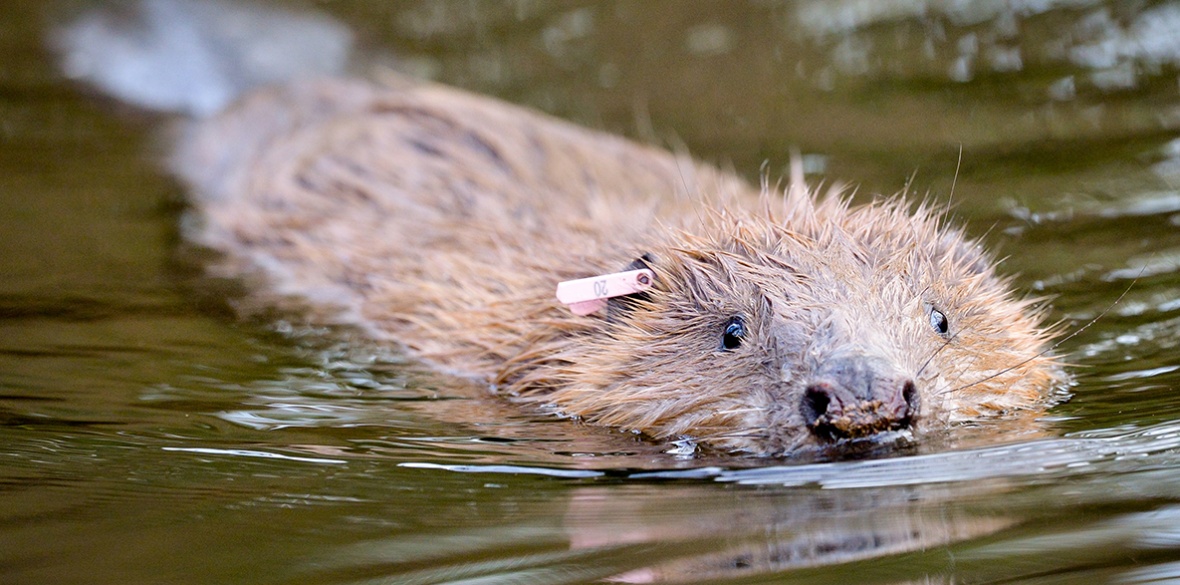This is the last article you can read this month
You can read more article this month
You can read more articles this month
Sorry your limit is up for this month
Reset on:
Please help support the Morning Star by subscribing here
IT SEEMS incredible even to me, that it was just over six years ago that I first wrote about the potential of using beavers to calm and slow some British rivers.
In a sense it started in 2008 with some very naughty girls or boys who smuggled a few of the remarkable beasts into a section of the River Otter near the village of Ottery St Mary in Devon.
It was believed to be the first wild and free population of beavers in the English countryside for over 500 years, although various wildlife trusts and other groups had established some enclosed captive beaver populations mostly in Scotland.
At the time we environmental campaigners feared the small Devon colony would end up in a zoo or even culled alongside so many of our wild badgers that were being culled at the time.
Farming minister in David Cameron’s Tory-Lib Dem coalition was ex-Ukip MP George Eustice and he and Defra said they wanted to get rid of the Devon beavers by capture or cull.
At the time Defra claimed beavers were an invasive non-native species. Complete nonsense from people paid to be wildlife experts.
They should have known that beavers were a historic British species, albeit one that had been persecuted into extinction over the centuries.
If that wasn’t enough, they also claimed that beavers could carry a rare parasite.
A vigorous public campaign by groups like Friends of the Earth and Devon and other Wildlife Trusts succeeded in changing the government’s mind.
Eventually embarrassed by the expensive fiasco of his badger cull, Eustice was forced to listen to more expert opinion on beavers.
Defra decided that the Devon Wildlife Trust could manage a reintroduction programme for the beaver, but only as part of a carefully regulated five-year trial. That trial has just been satisfactorily ended.
North of the border beavers had been reintroduced into Scotland and were breeding happily on several Scottish rivers where their dams not only regulated river flow but also provided some spectacular picture postcard views.
As early as 2001 a population of wild beavers became established on Scotland’s River Tay.
The hugely intelligent European beaver (Castor fiber) is the largest rodent in Europe.
They build amazing architectural structures for their dams and lodges.
They should not be confused with their cousins on the other side of the Atlantic. The American beaver (Castor canadiensis) builds much larger and untidier lodges. This species never lived in Britain or Europe.
In Britain and Europe beavers were once hunted almost to extinction. They were valued for their pelts and meat.
Beaver hats were once the height of fashion and countless beavers were killed for the hat felt that is made from beaver fur.
The beaver has anal glands that produce a substance called castoreum that was used in medicine, food and perhaps most strangely in very expensive perfumes.
“What is that fascinating aroma?” I asked. “Oh, it comes from a beaver’s smelly bottom.”
Now this fascinating and historically much-hunted animal is coming back to its natural homes all over Europe and in Britain.
Recent reports suggest a record number of beavers will be released by Wildlife Trusts in five counties — Dorset, Derbyshire, Hampshire and the Isle of Wight, Nottinghamshire and Montgomeryshire.
In Scotland, the beaver was recognised as a native species again in 2016, but some are proposing culls to keep numbers down.
Around the time those beavers arrived on Devon’s rivers I was lucky enough to visit the Biesbosch National Park in the Netherlands where beavers were reintroduced in 1988 after being completely exterminated in the 19th century.
After the reintroduction in the Biesbosch, the overall Dutch population has spread considerably, supported by additional reintroductions.
Beavers typically grow to 80-100cm (31-39in) and the tail adds another 25-50cm (10-20in).
Adults weigh between 11-30kg (24-66lb), with an average of 18kg (40lb).
They usually have one litter of three kits per year. Baby beavers are known as kits.
Unlike most other rodents, beavers are monogamous, staying together for many breeding seasons.
Beavers help support wetland ecosystems by creating sustainable wet landscape with lakes, pools and slow flowing rivers.
These increase biodiversity and provide habitat for threatened and rare species such as water voles, otters and water shrews as well as dragonflies, damselflies and many other watery species.
Beavers gnaw branches from waterside trees and shrubs so that they regrow denser, which provides useful cover for birds and animals.
Their dams trap sediment and improve water quality and help regulate river flows and reduce flooding.
In July 2015 I wrote in these pages: “Now is the time to encourage the reintroduction of beavers to suitable sites in both England and Wales.”
Somebody listened it seems and today our wild beaver population is fast approaching 500.
Sadly not everybody welcomes the return of the beaver so some beaver locations need to be kept secret from protesters and even shooters.
There are many well-known groups of beavers as well as a good few populations of free-living beavers that are being supported and protected secretly.
There are also plans for reintroductions on rivers in Kent, north Somerset, Gloucestershire, west Devon and Wales.
All those years ago we thought that any beaver reintroductions would be on wild and remote rivers in wild wilderness areas like the Fens, the Yorkshire Dales or the Somerset Levels.
In fact the movement to reintroduce the beaver is gaining momentum all over the countryside.
Just last month Bedford, a town that has had more than its share of flooding from the River Great Ouse, held a climate change committee meeting.
One well-known local environmentalist, Jane Morris (who just happens to be my daughter-in-law), suggested introducing beavers to the River Great Ouse in or near the town.
Jane is an ex-Labour councillor who was very active in the Socialist Environment and Resources Association. SERA is the only environmental group affiliated to Labour, and campaigns for the party to adopt ambitious environmental policies.
Jane’s ambitious idea saw her asking: “In the light of recent flooding events in the borough, notably at Christmas, where various families and houses had to be evacuated, are there any plans to introduce beavers to the River Great Ouse within Bedford Borough?”
She went on to give a comprehensive range of examples of where beaver colonies have been introduced in other parts of the country.
These include Cornwall, Devon and Essex, with financial and flooding benefits for those areas.
The River Great Ouse, at 143 miles (230km) is Britain’s fifth-longest river. It flows from Syresham in Northamptonshire, through Buckinghamshire, Bedfordshire, Cambridgeshire and Norfolk to drain into the Wash and the North Sea near King’s Lynn.
Jane received lots of positive support, not least from Lib Dem Cllr Charles Roydon, the deputy mayor and portfolio holder for the environment.
He declared: “I love beavers, I went on a beaver safari when I was in Scotland some years ago and we found a beautiful colony.”
Getting his teeth into the subject, he added: “If I could find somewhere in Bedfordshire to do this I’d be really, really pleased.
“The work that they do in terms of changing the habitat, and the diversity, is just amazing. I really would be pleased if we could have something local.”
The mayor invited anyone who owns or knows of suitable beaver sites to bring details to the council which would then investigate.
During the present pandemic I constantly hear people searching for a new normality. Let’s all hope that beavers on our rivers can become part of that new normal.
All over Britain we have built over flood meadows and built houses far too close to the riversides.
If we are to avoid even more flooding we will certainly need all the help we can get from our very old friend, the beaver.










